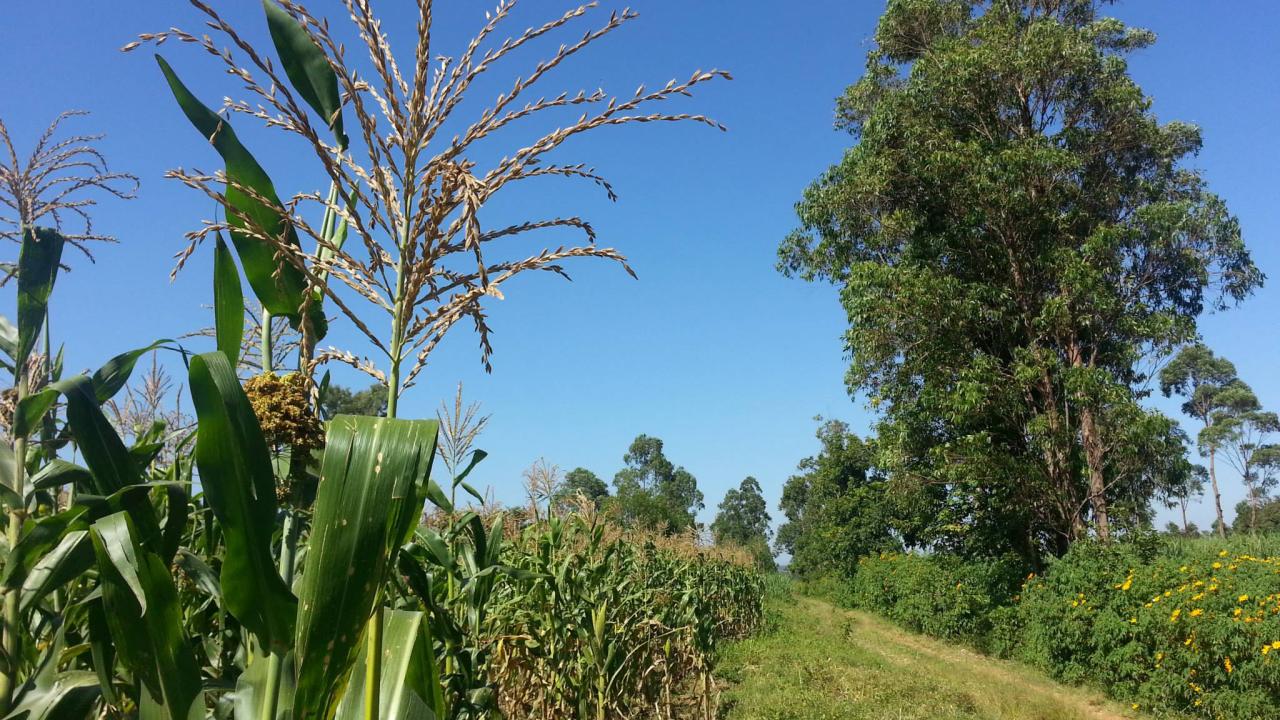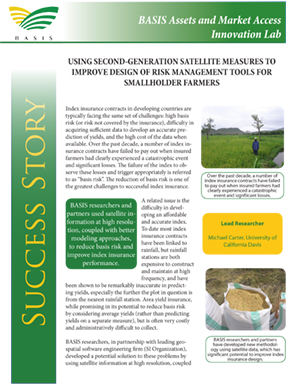
Index insurance contracts in developing countries are typically facing the same set of challenges: high basis risk (or risk not covered by the insurance), difficulty in acquiring sufficient data to develop an accurate prediction of yields, and the high cost of the data when available. Over the past decade, a number of index insurance contracts have failed to pay out when insured farmers had clearly experienced a catastrophic event and significant losses. The failure of the index to observe these losses and trigger appropriately is referred to as “basis risk”. The reduction of basis risk is one of the greatest challenges to successful index insurance.
 A related issue is the difficulty in developing an affordable and accurate index. To date most index insurance contracts have been linked to rainfall, but rainfall stations are both expensive to construct and maintain at high frequency, and have been shown to be remarkably inaccurate in predicting yields, especially the further the plot in question is from the nearest rainfall station. Area yield insurance, while promising in its potential to reduce basis risk by considering average yields (rather than predicting yields on a separate measure), but is often very costly and administratively difficult to collect.
A related issue is the difficulty in developing an affordable and accurate index. To date most index insurance contracts have been linked to rainfall, but rainfall stations are both expensive to construct and maintain at high frequency, and have been shown to be remarkably inaccurate in predicting yields, especially the further the plot in question is from the nearest rainfall station. Area yield insurance, while promising in its potential to reduce basis risk by considering average yields (rather than predicting yields on a separate measure), but is often very costly and administratively difficult to collect.
BASIS researchers and partners used satellite information at high resolution, coupled with better modeling approaches, to reduce basis risk and improve index insurance performance.
BASIS researchers, in partnership with leading geo-spatial software engineering firm (SI Organization), developed a potential solution to these problems by using satellite information at high resolution, coupled with better modeling approaches, to reduce basis risk and improve index insurance performance. This methodology has significant potential to improve index insurance design for the following reasons:
- High spatial resolution: With individual resolution of 250 meters by 250 meters, readings can be fine-tuned to improve estimates of yields.
- Measures of plant biomass growth: These sophisticated measures of plant growth allow for tracking of plant growth and better estimation of yields.
- Crop masking: Researchers and partners developed a cropmasking model that can differentiate within the satellite images what is the intended insured crop (in this case rice) vs. other non-crop vegetation.
- Planting date detection algorithm: This algorithm can detect when a field is flooded for planting. This helps to identify the “start” date, and to then identify the best “end” date for the contract.
These innovations helped significantly in the development of a more accurate index for use with an insurance product. It is important to note, however, that the model is not perfect. There remains some basis risk (though greatly reduced compared to alternative indices). As such, BASIS researchers need to continue their investigation and will consider supplemental contract design innovations to reduce the risk, such as an audit rule whereby if the index is not triggered but farmers feel they have experienced a loss that should have been covered, farmers can request a crop-cutting audit to verify the triggers accuracy. It is important, however, that this expensive back-up be a second line of verification that is not used often. The initial index-based trigger should be as accurate and reliable as possible before any other contract innovations are relied on.
